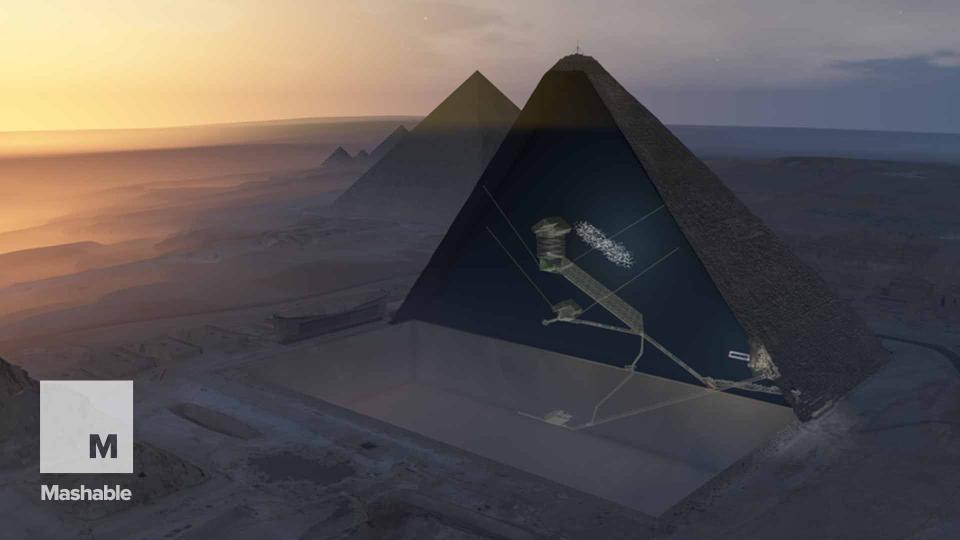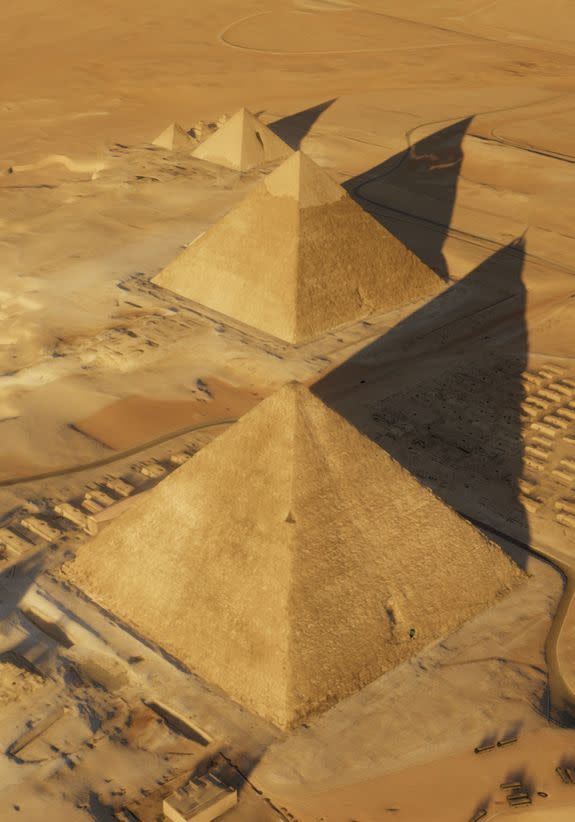Scientists found a mysterious void in the Great Pyramid of Giza thanks to particle physics


A void secreted away in the largest pyramid in Giza has been revealed thanks to some space-age technology.
Scientists used cutting-edge imaging techniques to see how particles called muons behaved deep within the Great Pyramid, also known as Khufu’s Pyramid.
SEE ALSO: Magnificent images capture the ancient and modern wonders of 1800s Egypt
The behavior of those particles — which are created by cosmic rays zipping around Earth's atmosphere — revealed the 30-meter-long void in the structure, which is around 450 feet tall and more than 4,000 years old.

Image: ScanPyramids mission
A new study in the journal Nature details the finding, which could help scientists learn more about how the pyramids were made in the first place.
The Great Pyramid "was built on the Giza Plateau (Egypt) during the IVth dynasty by the pharaoh Khufu (Cheops), who reigned from 2509 to 2483 BC1," the study says.
"Despite being one of the oldest and largest monuments on Earth, there is no consensus about how it was built. To better understand its internal structure, we imaged the pyramid using muons, which are by-products of cosmic rays that are only partially absorbed by stone."
Muons detectors work like X-ray machines, only these particle can travel deeper than X-rays, revealing more detail of whatever structure they're seen within.
The newfound void in the Great Pyramid appears to be right above the Grand Gallery, a large space that had been detected by scientists earlier, according to the new study.
Not all of the void's mysteries have been revealed.
"There are still many architectural hypotheses to consider; in particular, the big void could be made of one or several adjacent structures, and it could be inclined or horizontal," the study said. "The detailed structure of the void should be further studied."

Image: ScanPyramids mission
That said, others are less enthusiastic about the new finding.
Egyptologist Zahi Hawass, for example, told the Associated Press that this discovery isn't a discovery at all, saying that people already knew of its existence.
“In order to construct the Grand Gallery, you had to have a hollow, or a big void in order to access it — you cannot build it without such a space,” Hawass told the AP. “Large voids exist between the stones and may have been left as construction gaps.”
WATCH: This adorable girl discovered the famous 'Excalibur' sword


